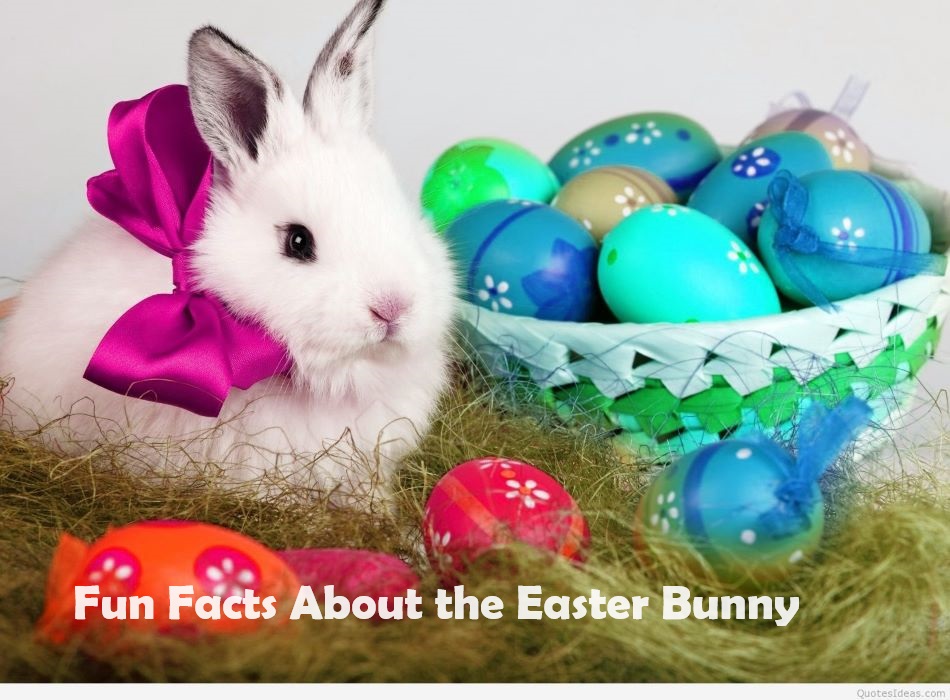With Easter just a week away we thought some facts about the holiday favorite, the Easter Bunny were in order. Of course we all know the meaning of this very blessed day, but it also a time for some innocent fun for the young ones.
The Easter Bunny brings in $18 billion annually. Approximately eight in 10 U.S. adults celebrate the Easter holiday, according to the National Retail Federation, which says consumers spend an average of $151 per person on the holiday, encompassing everything from clothing and candy to cards and flowers. Collectively, it says, Easter spending totals more than $18 billion per year in the United States. Although the Easter Bunny alone isn’t responsible for all that spending, it definitely deserves at least some of the credit, as 65 percent of consumers say their Easter shopping is motivated by tradition and 22 percent is motivated by store displays and decorations; the Easter Bunny typically has a starring role in both.
The Easter Bunny is a German import. Whether it originally was a product of paganism or Christianity—and more on that later—Americans ultimately have just one group to thank for the Easter Bunny: the Germans. As early as the 17th century, German folklore references the legend of Oschter Haws, German for “Easter hare.” The mythical rabbit who visited children while they slept rewarded them with colored eggs for their good behavior, which it left in nests that German children made out of hats.
When German Lutherans settled in Pennsylvania in the 18th century, they brought their customs with them. As their traditions spread across the United States, nests eventually migrated from hats to baskets, whose contents gradually grew to include candy and gifts alongside colored eggs.
Chocolate Easter bunnies came from Germany, too. To older kids and adults, the best version of the Easter Bunny might just be the one that’s made of chocolate, wrapped in foil, and sold in stores. By the 19th century, Easter traditions in Germany had evolved to include cardboard or fabric bunnies that children left out for Oschter Haws, who filled them with candy. At the same time, Germany was becoming an epicenter for chocolate making. It was only a matter of time, then, until Germans had the sweet idea to replace their cardboard candy vessels with chocolate ones. So, the chocolate bunnies likely came from the same German immigrants who brought the Easter Bunny to America via Pennsylvania. The first American credited with creating a chocolate bunny was Pennsylvanian Robert Strohecker, a drugstore owner who created a five-foot chocolate rabbit as an Easter promotion in 1890.
The Easter Bunny is an Arctic hare. Have you ever wondered what kind of rabbit the Easter Bunny is? It appears that it’s an Arctic hare, based both on its traditionally white fur and on the pagan lore from which the Easter Bunny hopped (the goddess Eostre’s bird-cum-bunny Lepus was a snow hare). Native to northern Canada and Greenland, Arctic hares are white in the winter so as to blend in with ice and snow, but blue-gray in the spring and summer to match rocks and vegetation. Next to their color, their defining feature is their speed: They can move up to 40 miles per hour, which is obviously how the Easter Bunny gets to every house to deliver the eggs.
The huge majority of rabbits in shelters were purchased as Easter gifts. The Easter Bunny is a fictional character—and that’s how it should remain, according to the House Rabbit Society, a rabbit rescue group that discourages the gifting of baby rabbits for Easter. Every year, it reports, thousands of baby rabbits are purchased and gifted as personal Easter Bunnies, then subsequently neglected or abandoned. It’s been reported that as many as 80 percent of all rabbits that are up for adoption at shelters originally were purchased as Easter gifts. By all means, celebrate Easter with the Easter Bunny; but please make yours chocolate.
Around 100 million chocolate bunnies are sold for Easter. Considering $2.6 billion is spent on candy alone during this religious and secular spring celebration, it makes sense. Oh, and that’s only in the United States. We bet most of those people have opinions on whether to devour theirs tail or ears first. The fact is a surprising 59% of people eat the ears first.
What about other candies besides chocolate bunnies? Americans buy more than 900 million marshmallow Peeps during the Easter season. That makes it the best selling non chocolate candy at Easter time. The Bethlehem, Pennsylvania, factory makes an impressive 5.5 million a day.
In other Easter candy fun facts……More than 1.5 Million Cadbury Creme Eggs are made every day. Even more impressive is that the Bournville factory in Birmingham, England, churns out 500 million of the cream-filled eggs every year. If you piled all those eggs on top of each other, they’d create a tower that’s taller than Mt. Everest……….. Americans consume over 16 million jelly beans during Easter. That’s enough jelly beans to circle the globe not once, not twice, but three times — or to fill a plastic egg the size of a nine-story building. First introduced as an Easter treat in the 1930s, we can’t imagine this day without them.
Have a very Happy, fun and blessed Easter everyone!


















